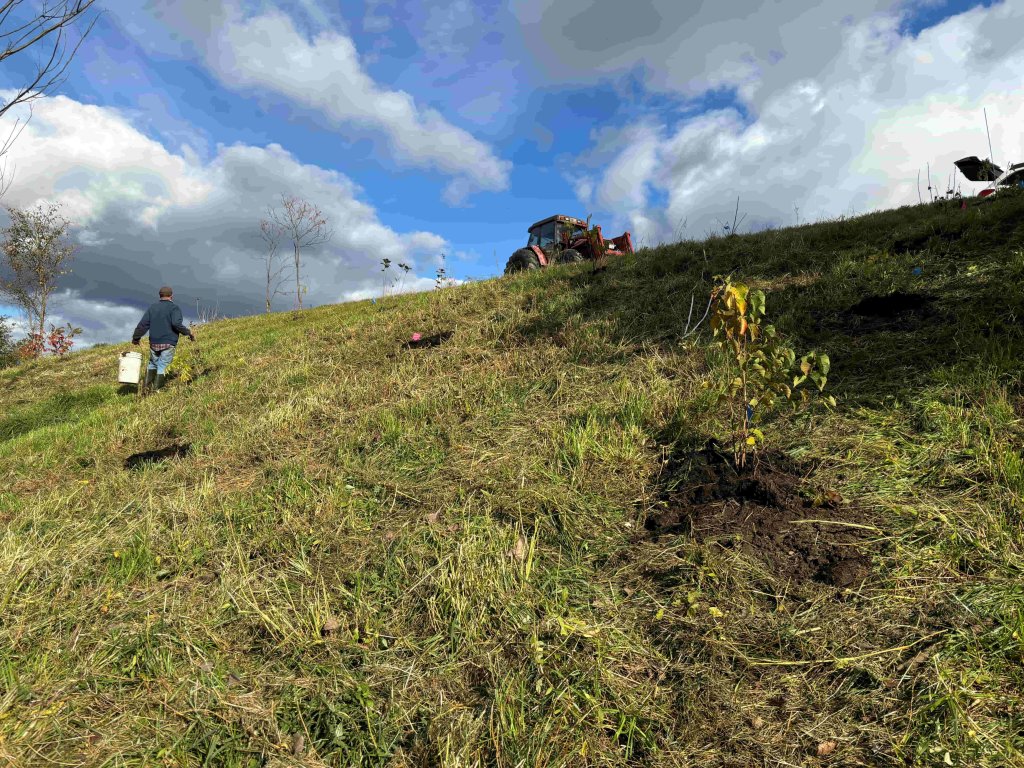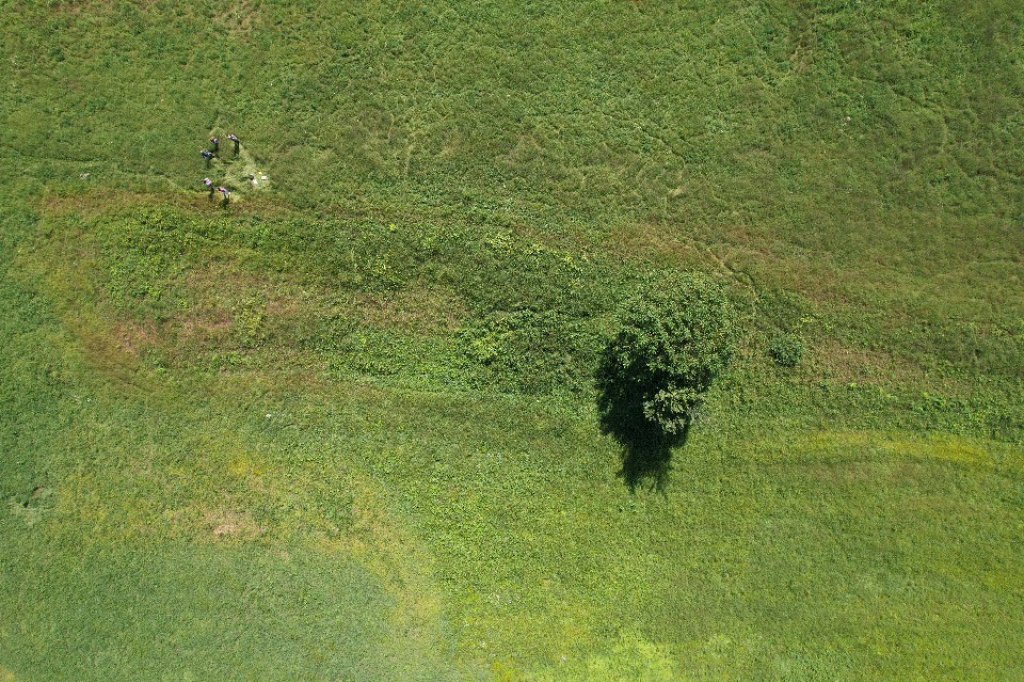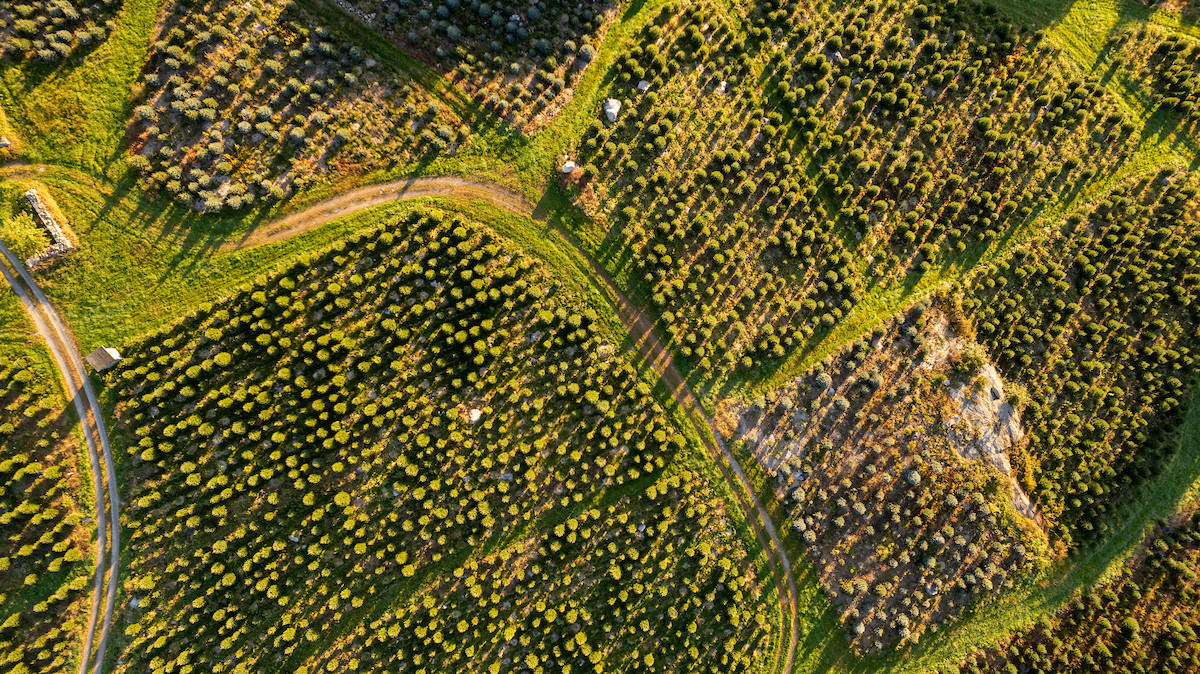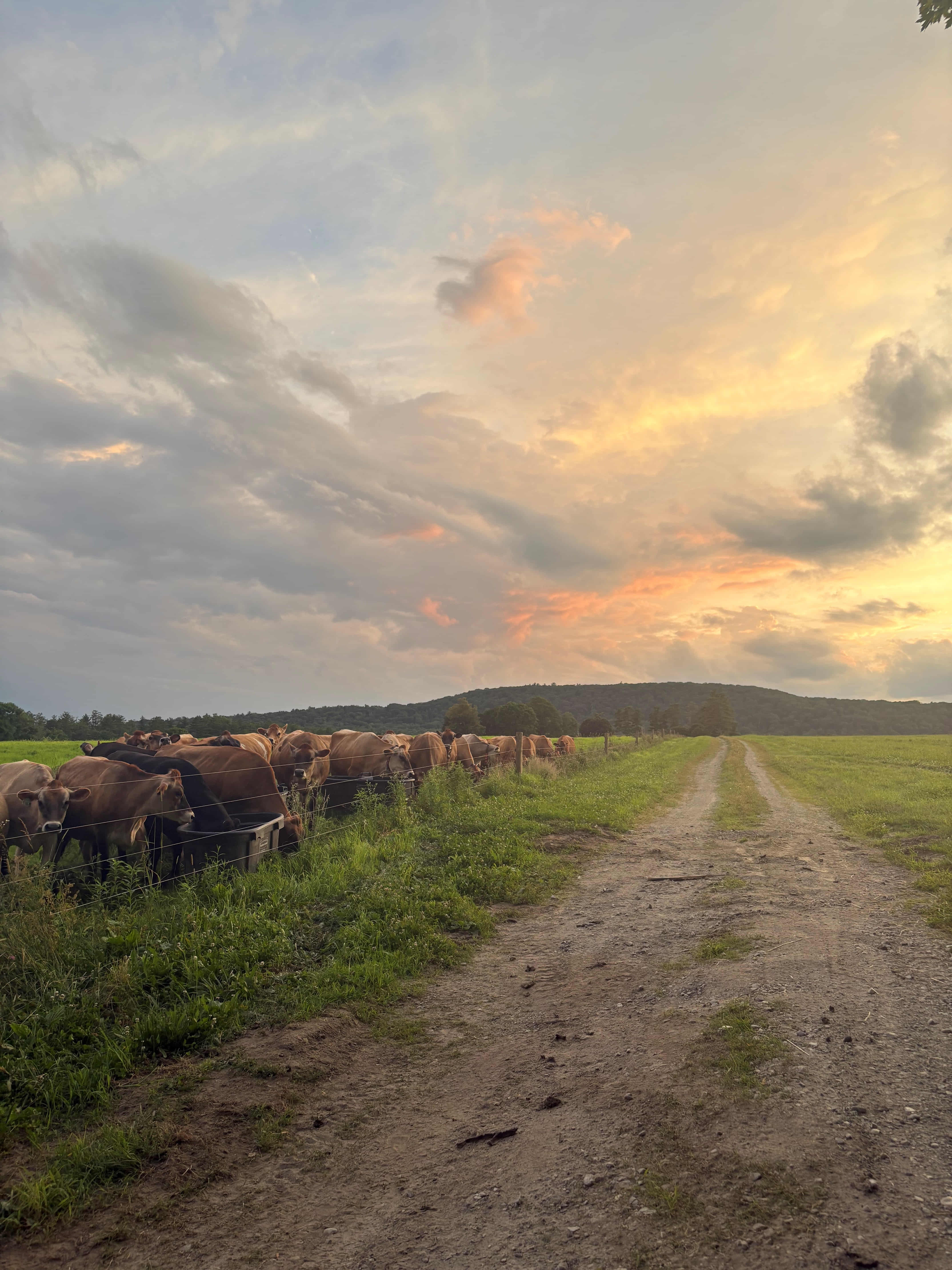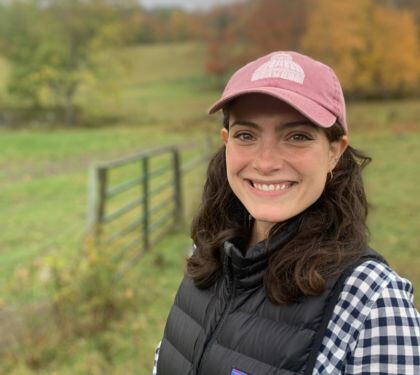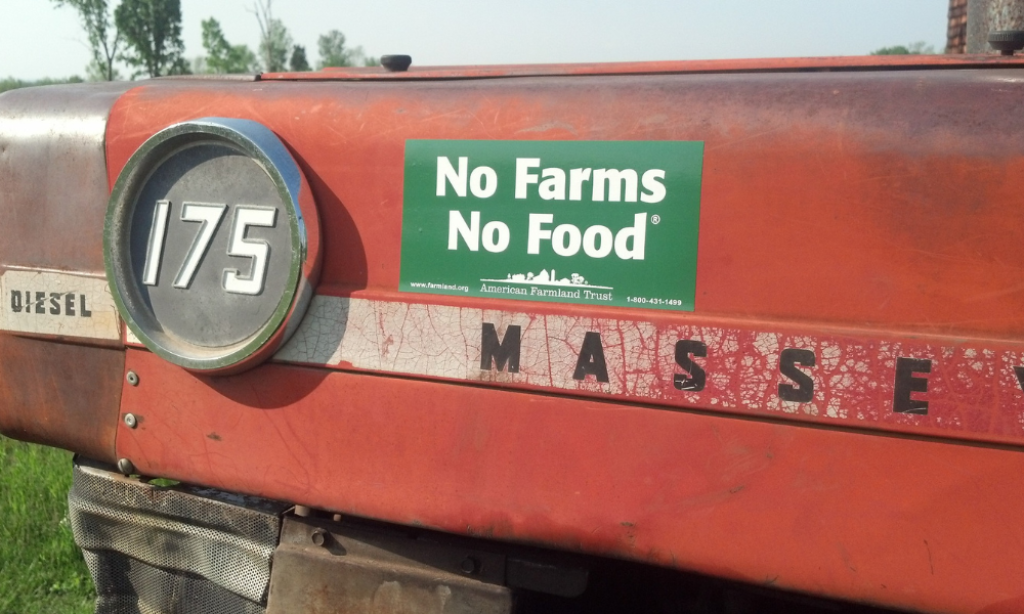Breathing Life Back into a Hedgerow: Brookfield Farm’s Regenerative Microgrant Journey
On a thin strip of land between two hayfields in Walpole, New Hampshire, a once-impenetrable wall of invasive plants is being transformed into pollinator-friendly hedgerow. Where bittersweet, honeysuckle, and multiflora rose once dominated, clover is now blooming, pollinators are returning, and the sunlight can actually reach the soil.
This remarkable change has been fueled by the passion and persistent work of Holly and her family at Brookfield Farm, powered in part by a Regenerative Livestock Farming (RLF) microgrant from American Farmland Trust.
From Landscaping to Livestock
Brookfield Farm’s story began in 1995, when Holly and her husband sold their landscaping business, bought 70 acres in Cheshire County, and started farming with just a few beef cow-calf pairs. Over the years, the farm has grown to manage nearly 280 acres of pasture and hayfields — “beg, borrow, and steal,” Holly says with a laugh. The couple eventually transitioned to organic dairy and now ship about 1,000 pounds of milk every other day.
Recently, the family purchased 30 acres of river-bottom land along the Connecticut River. The soil there is rich, but decades of intensive corn production left it compacted and depleted. On one steep slope between two fields, a dense hedgerow of invasive species had taken over.
“It was a jungle,” Holly recalls. “One NRCS staffer came out and said, ‘You could just get out here with a weed whacker.’ And I said, ‘Come with me.’ We pushed through the multiflora rose, five feet in, and we were standing on the edge of a sheer 15-foot drop. I said, ‘Now tell me how I’m supposed to mow that with a weed whacker!’”
The family knew that, unmanaged, the hedgerow would continue to erode soil, block sunlight, and suppress native species. But they also saw its potential: a healthy hedgerow could slow erosion, support pollinators, and become a vibrant part of the farm’s ecosystem.
A Microgrant Makes It Possible
With help from our RLF microgrant, Brookfield Farm was able to tackle the project. “We hired someone with a mulching head to take out all the invasives,” Holly explains. “Then a friend with a bulldozer reshaped the steep drop-off into a gentler, rolling slope so that we can mow safely.”
Once the invasives were removed, they planted a mix of clovers and grasses as a cover crop. “The seedbed of invasives was still in the ground,” Holly says. “As soon as the sunlight and rain hit it, everything started to regrow. But because we reshaped the terrain, we can now mow it and keep it under control. The clover is thriving, and it’s great for pollinators.”
While the grant didn’t cover everything, plans for planting nut and fruit trees are still underway. So far, they’ve planted elderberries and expect to expand more pollinator-friendly species.
Doing It Organically
Brookfield Farm has a no-spray policy. “Even if we could spray, I don’t have faith in it,” Holly says. “We’ve found the only way to keep invasive species in check is to mow, mow, mow. You have to stay on it.” She knows this firsthand. On another field at their homestead, she spent summers fighting bittersweet. “We tried goats, we tried everything people recommended, but in the end, it was an old John Deere lawn mower and a lot of patience. You can’t get rid of the seed bank overnight,” she says. The hedgerow project is similar: years of steady mowing, paired with reseeding, will eventually let native species reclaim the ground.
But for Holly, this work is about more than one hedgerow.
“We have the privilege of farming some of the finest soils in the world. Regenerative practices are the only way to bring it back so that it can produce to its full potential again.”
The family’s goal is to build healthier soils, support pollinators, and make the land more resilient in the face of climate extremes. “It’s a financial burden,” Holly admits, “but it’s incredibly rewarding to see the work start to pay off.”
The Power of Small Grants
As the hedgerow recovers, the family is also thinking about the future of Brookfield Farm. Their oldest son, who recently graduated from Saint Lawrence University, dreams of adding a small value-added dairy business to the farm’s organic milk production. For Holly, the hope is that the next generation can continue farming this land and keep it from the development pressure that creeps closer every year.
Reflecting on the microgrant, Holly is clear about its importance: “People think small family farms are doing just fine. They don’t see the financial strain. A grant like this can make a huge difference — it allowed us to turn five acres of unmanageable, invasive-filled hedgerow into something that is now a productive part of the farm.”
And if you’re a farmer considering applying? Holly advises, “You really need to understand the problem you’re trying to solve and how you’ll measure improvement. Whether it’s removing invasives or buying a piece of equipment, be clear about the difference it’s going to make. If you can show that, it helps your chances — and it helps the project succeed.”
This story is part of American Farmland Trust’s Regenerative Livestock Farming Microgrant program, which supports farmers in improving grazing systems, soil health, and resilience through small, targeted grants.
The Regenerative Livestock Farming grant re-opens 9/15/2025 - for more information, click here.

